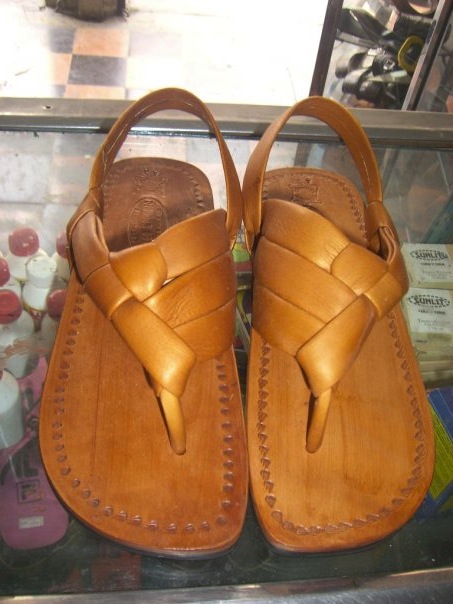Abarcas Trespuntás – Woven Sandals from Colombia.
Posted: February 1, 2012 | Author: huaracheblog | Filed under: Huarache Culture | Tags: Abarcas, Abarcas Trespuntás, Colombia, Colombian Crafts, Crafts, Sandals, Traditional Footwear, Woven Footwear |Leave a commentAnother reader very kindly mentioned the very original Abarca Trespuntás traditional woven sandal from Colombia. This is good news not only because Huarache Blog can help promote the Abarca Trespuntás, but also because I hope a community can form to collectively promote traditional footwear.
There is little written on the internet about this fascinating design and there are only a few photos. The best source of information is the facebook group Yo Uso Abarcas “Trespuntas”. Click on the link for more information.
A happy coincidence is that this facebook group is like Huarache Blog promoting a traditional footwear design to the world, through the internet! The images below of the Abarca Trespuntás are all borrowed from Yo Uso Abarcas “Trespuntas”.
The name ‘Abarca’ probably comes from the Spanish word ‘Abarcar’ meaning to clasp, embrace, or contain. Abarca is also the name of another traditional Spanish footwear design also worn by farmers there, this design was probably introduced to Colombia by the Spanish. The Abaraca Menorquina from the Spanish island of Menorca being the most well known.
But the Abarca Trespuntás being a very different design is I believe unique to Colombia. Traditional to the the northern coastal areas, the Abarca Trespuntás is also worn in the ‘savannah’ regions of Córdoba (Chinu), Bolívar and Sucre.
Like Mexican Huaraches the traditional Abaraca Trespuntás is a woven leather sandal with a leather, or car tyre sole. Originally worn by farmers in Colombia and self made using veg. tanned leathers, today Abaraca Trespuntás designs are also commercially available and crafted in workshops called ‘talabarterias’. New designs have started to include new materials as textile straps and thinner die cut rubber soles.
The word ‘Trespuntás’ means ‘Three Points’, meaning that the straps are anchored to the sole in 3 points. To understand how the ‘Three Points’ work, it would be very interesting to see a photo of how the 3 inside/medial straps connect to the sole and to see how the strip in between the toes is connected to the straps.
If any readers have more information about Abarcas Trespuntás or other disappearing traditional footwear from Central and South America please let Huarache Blog know. Thank you again to all the readers who have contributed to Huarache Blog.


